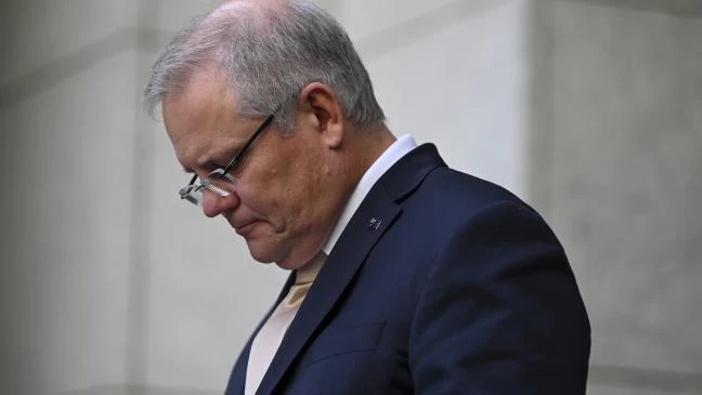- text by Samantha Maiden, news.com.au
Scott Morrison is considering slashing the $1500 JobKeeper payment or phasing it out faster than expected amid fears it’s creating “zombie” companies that don’t exist without the wage subsidy.
Just days after the first payments started hitting employers’ bank accounts, news.com.au has confirmed options are under consideration to end the one-size-fits-all approach of paying $1500 a fortnight to each employee regardless of the size of the business, or whether workers are part-time or casual and previously earned less.
The current JobKeeper scheme is legislated to end on September 27, but new options under examination include: reducing the $1500 subsidy, targeting it at smaller businesses, or limiting it to particular industries that are hardest hit by COVID restrictions.
Australia’s success in flattening the curve of COVID-19 is triggering a major rethink of the most expensive wage subsidy in the nation’s history.
The Prime Minister has outlined a three-stage plan for businesses to end hibernation but with thousands of cafes and restaurants set to reopen by June, there are real questions over whether all businesses need the $1500 a fortnight until September 27.
Despite predictions the scheme would cost $130 billion, news.com.au also understands JobKeeper is running at least $20 billion under budget as Treasury officials consider plans to slash the cost of the scheme even further.
The JobKeeper underspend is a result of the fact only 5 million workers are covered by JobKeeper, instead of the 6 million workers it was originally designed to cover.
Each worker costs the scheme $19,500 for the duration of the scheme with one million fewer workers signing up delivering the $20 billion-plus in savings.
One option under consideration draws on the New Zealand experience of Prime Minister Jacinda Ardern, who is tipped to announce her own redesign of the nation’s wage subsidy scheme in Thursday’s budget, including potentially retargeting the payment at specific industries.
Unlike Australia, NZ does not pay a flat rate regardless of whether workers are full-time or part-time. Instead it offers employers $585.80 per week for full-time employees and $350 for part-timers.
In New Zealand, employers must pass the full amount received onto the employee, except where a person’s income is normally less than the subsidy amount, in which case they can be paid their normal salary.
This leftover amount can be used for the wages of other affected staff including casuals not eligible for the scheme.
It is this option – no longer forcing employers to pay part-time staff a flat rate greater than the usual salary, but allowing bosses to use the leftover cash for other expenses including casual workers not covered by the scheme – that is being examined by the Morrison Government.
The Prime Minister has been criticised for excluding casuals from the scheme unless they have worked for a company for 12 months or longer.
The second option under consideration involves redesigning the scheme to simply cover 80 per cent of wage costs, ending the policy of paying all eligible workers a flat rate of $1500 regardless of whether they previously earned less.
This plan would involve a substantial redesign of the scheme to bring it more in line with Boris Johnson’s wage subsidy scheme, a proposal Treasurer Josh Frydenberg has previously resisted.
Mr Morrison flagged the Treasury review of JobKeeper on Friday, refusing twice to rule out changes to the wage subsidy or winding back the $550-a-week JobSeeker payments.
“The JobKeeper and the JobSeeker program, as you note, have a legislative life which was set out over a six-month time frame,’’ he said.
“There’s a review built into JobKeeper to be done before the end of June. Treasury will be doing that, they’ve been doing a lot of work on that just over the last week or so.
“So, look, we’ll take that one step at a time. But I need to stress again that that was a temporary lifeline put in place to help Australians through the worst of this crisis. It comes at a very significant cost, not just to current but to future generations as well. And it will be there to get us, to meet that objective, but it’s not envisaged – never was – to be a longer term arrangement.”
The Prime Minister was also offering no guarantees that the doubling of the JobSeeker allowance to $550-a-week will remain at that level for the entire six-month period and not phased down earlier to a smaller amount.
“I give them the certainty that I want them to be back in their jobs where they don’t need it; that’s what we want,’’ he said.
Proposals to phase out JobKeeper are also canvassed in Deloitte Access Economics Budget monitor to be released today, entitled “The virus sprint and the recovery marathon”.
“JobKeeper should be phased out rather than cut out. And ditto the increase in the unemployment benefit seen in JobSeeker,’’ Deloitte’s Chris Richardson said.
“There may also need to be a scaled-down wage subsidy for some small businesses in the six months after JobKeeper is phased out.
“Where a one-size-fits-all approach on the way into economic hibernation worked well, one size will not fit as well on the way out. Supports that create a sustainable reopening pathway will be complex, because the impacts are complex and non-uniform.”
Critically, he also warns JobKeeper is creating “Zombie firms” that will disappear as soon as the wage subsidy is removed, forcing workers onto the dole.
“One pandemic is enough for a lifetime and there is a risk that JobKeeper, as a measure designed to preserve jobs, could eventually create ‘zombie firms’ that neither fully recover but don’t go bankrupt. This would slow the broader recovery,’’ he said.
Deloitte is also warning the nation not to expect the economy to “snap back” any time soon as the Prime Minister has predicted, suggesting it is likely to remain above pre-crisis levels until late 2024.
“Yes, budgets should eventually return to normal once life returns to normal. But that will take time, and there are urgent tasks ahead. Until then, federal and state governments should be in ‘kitchen sink’ mode. Full steam ahead, and damn the debt,’’ Dr Richardson said.
Opposition treasury spokesman Jim Chalmers urged the Morrison Government to come clean with employers and workers over its plans for JobKeeper.
“Scott Morrison and Josh Frydenberg’s reluctance to level with the Australian people, to present a plan for what’s next or to include more workers in the otherwise-welcome support packages shows how little they understand about the challenges facing real people in the real economy,’’ he said.
Take your Radio, Podcasts and Music with you










